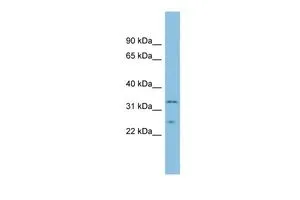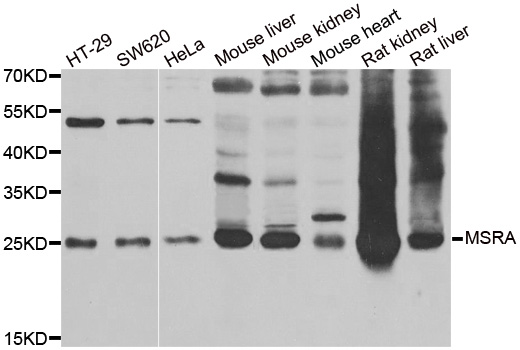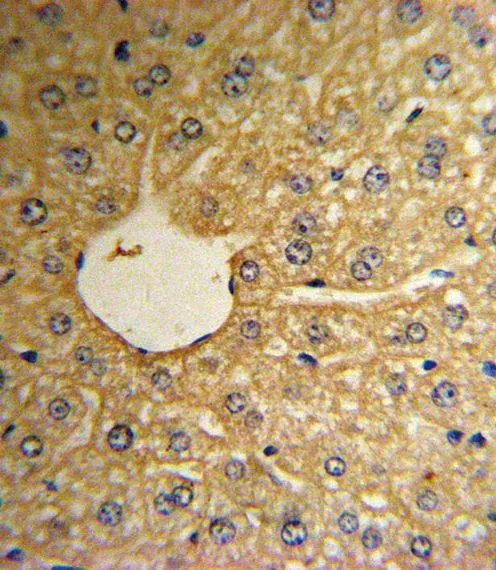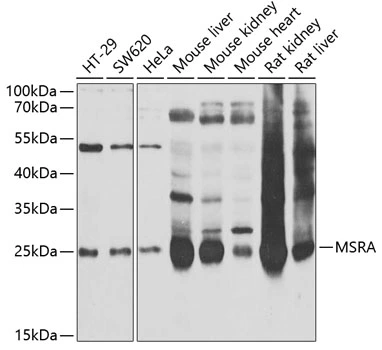
IHC-P analysis of human heart tissue using GTX45036 MSRA antibody at 1:600. Left to right:DAPI, MSRA, Merge. Low pH, heat-induced antigen retrieval method utilizing Sodium Citrate buffer was performed.
MSRA antibody, Internal
GTX45036
ApplicationsWestern Blot, ImmunoHistoChemistry, ImmunoHistoChemistry Paraffin
Product group Antibodies
ReactivityHuman
TargetMSRA
Overview
- SupplierGeneTex
- Product NameMSRA antibody, Internal
- Delivery Days Customer9
- Application Supplier NoteWB: 0.2-2.5 ug/ml. IHC-P: 2-10 ug/ml. *Optimal dilutions/concentrations should be determined by the researcher.Not tested in other applications.
- ApplicationsWestern Blot, ImmunoHistoChemistry, ImmunoHistoChemistry Paraffin
- CertificationResearch Use Only
- ClonalityPolyclonal
- Concentration0.5-1 mg/ml
- ConjugateUnconjugated
- Gene ID4482
- Target nameMSRA
- Target descriptionmethionine sulfoxide reductase A
- Target synonymsPMSR, mitochondrial peptide methionine sulfoxide reductase, cytosolic methionine-S-sulfoxide reductase, peptide Met(O) reductase, peptide met (O) reductase, peptide-methionine (S)-S-oxide reductase
- HostRabbit
- IsotypeIgG
- Protein IDQ9UJ68
- Protein NameMitochondrial peptide methionine sulfoxide reductase
- Scientific DescriptionThis gene encodes a ubiquitous and highly conserved protein that carries out the enzymatic reduction of methionine sulfoxide to methionine. Human and animal studies have shown the highest levels of expression in kidney and nervous tissue. The protein functions in the repair of oxidatively damaged proteins to restore biological activity. Alternative splicing results in multiple transcript variants. [provided by RefSeq, May 2014]
- ReactivityHuman
- Storage Instruction-20°C or -80°C,2°C to 8°C
- UNSPSC12352203








